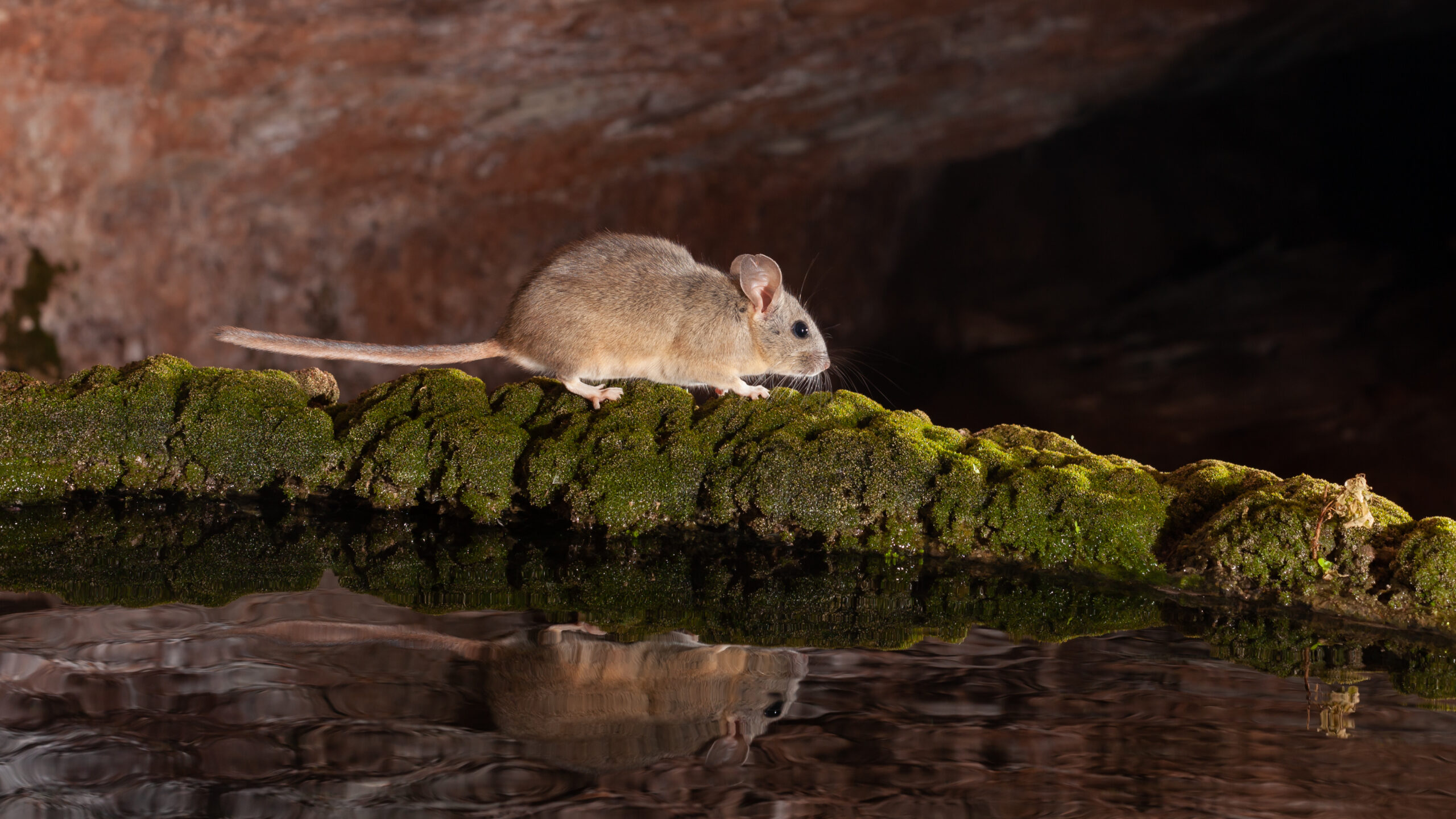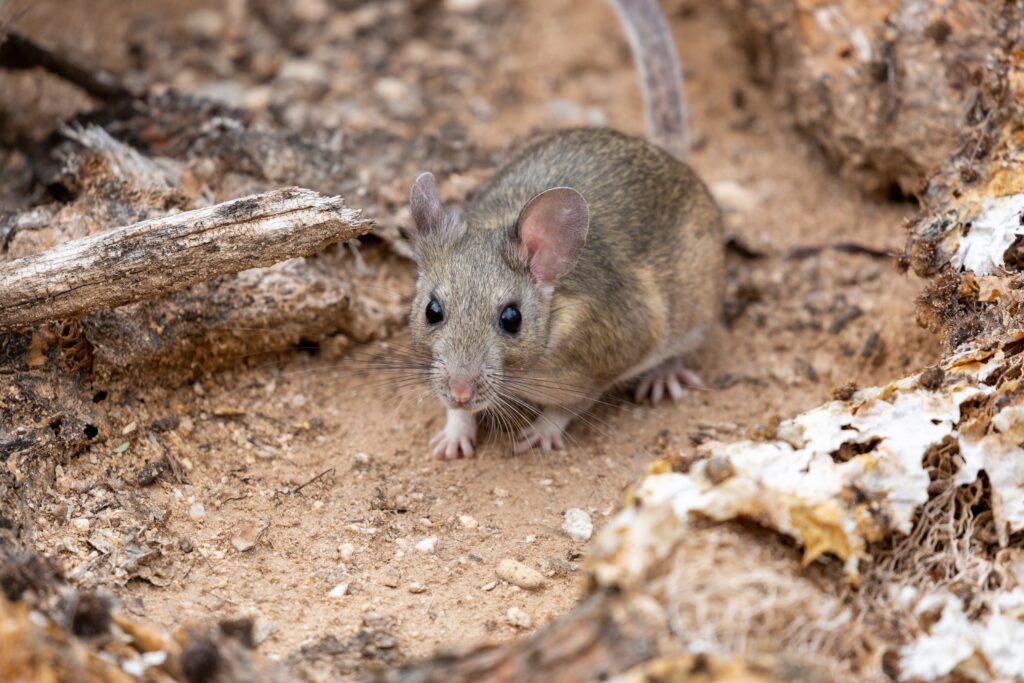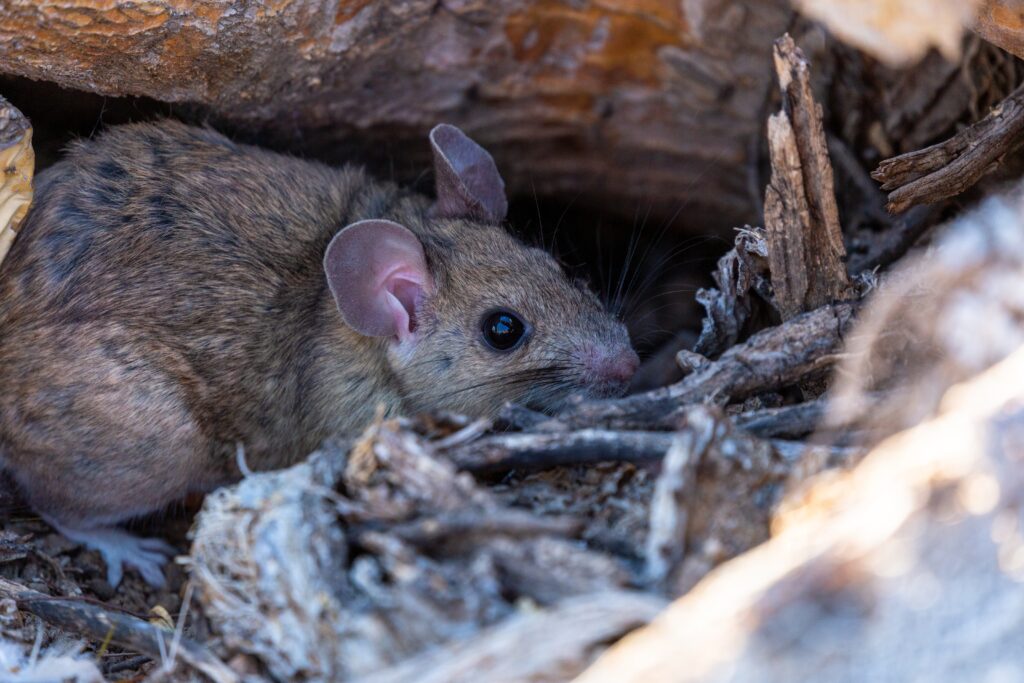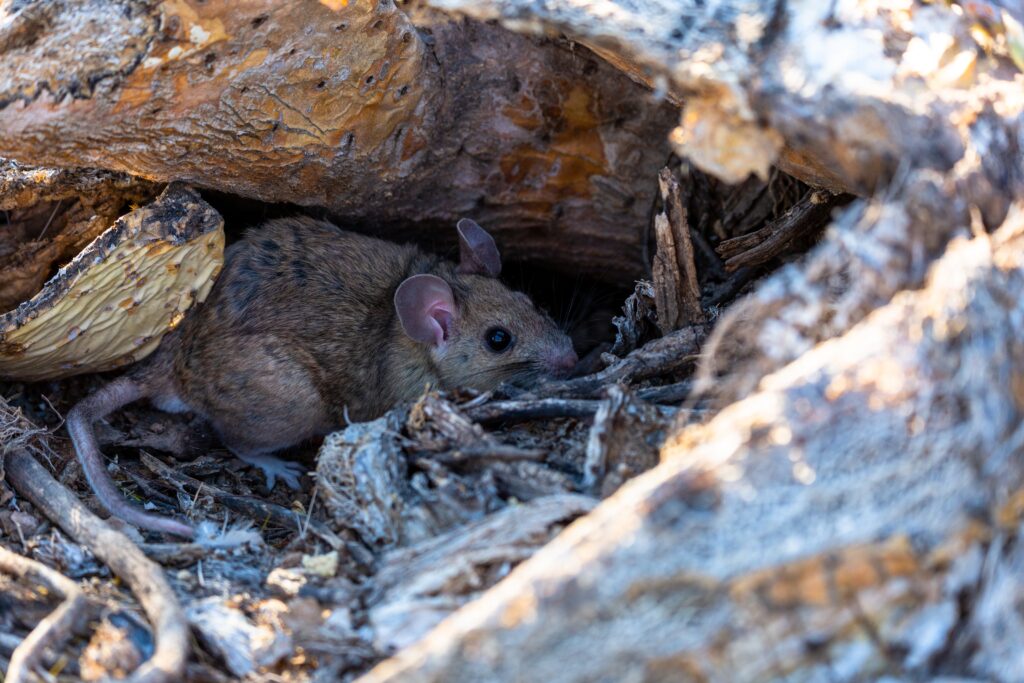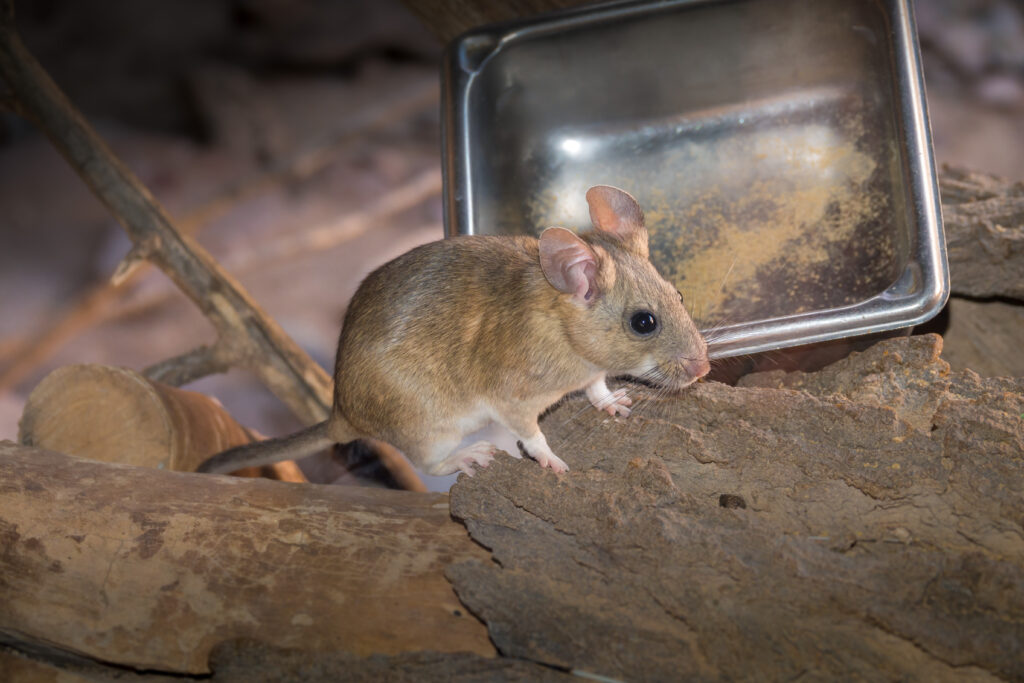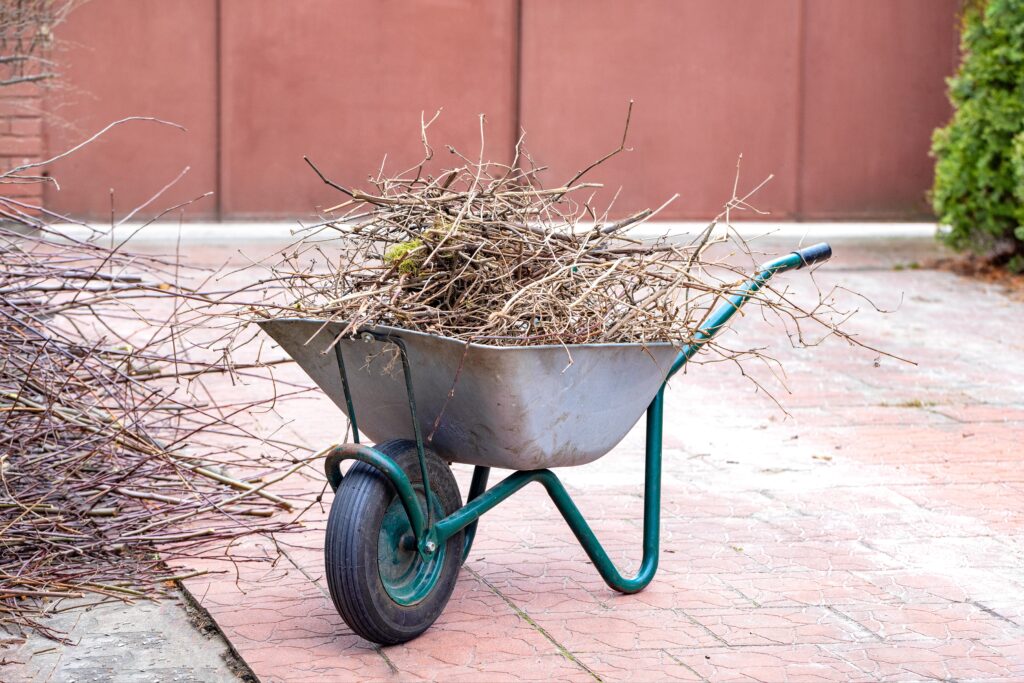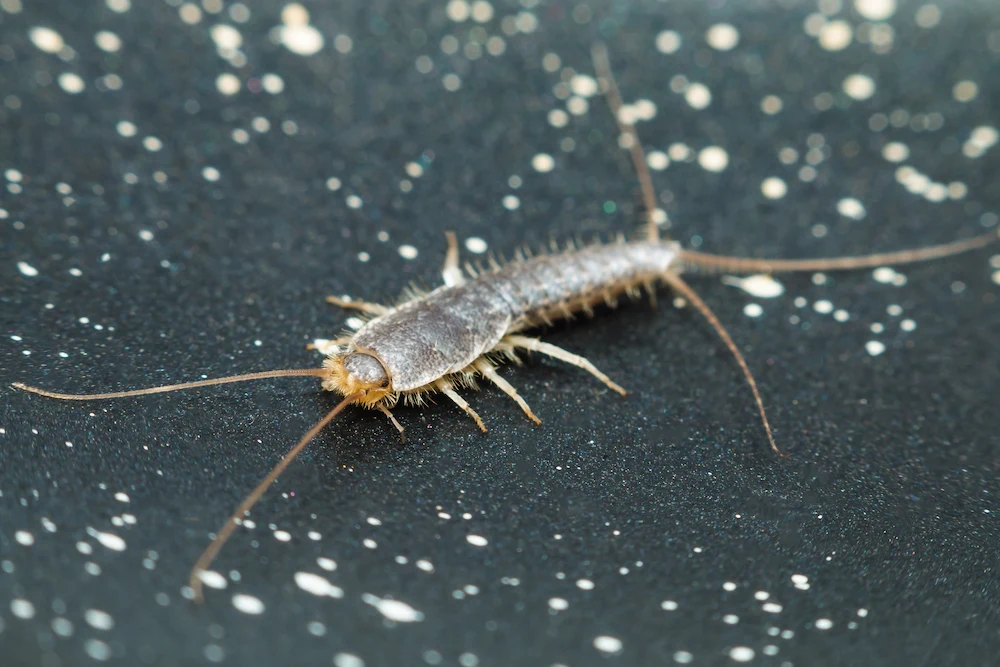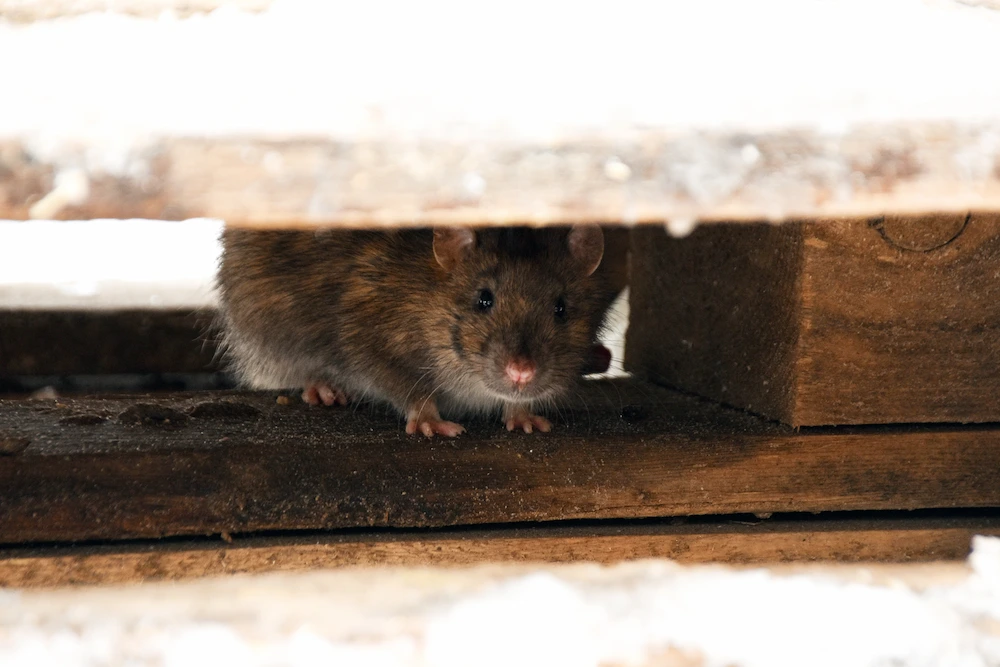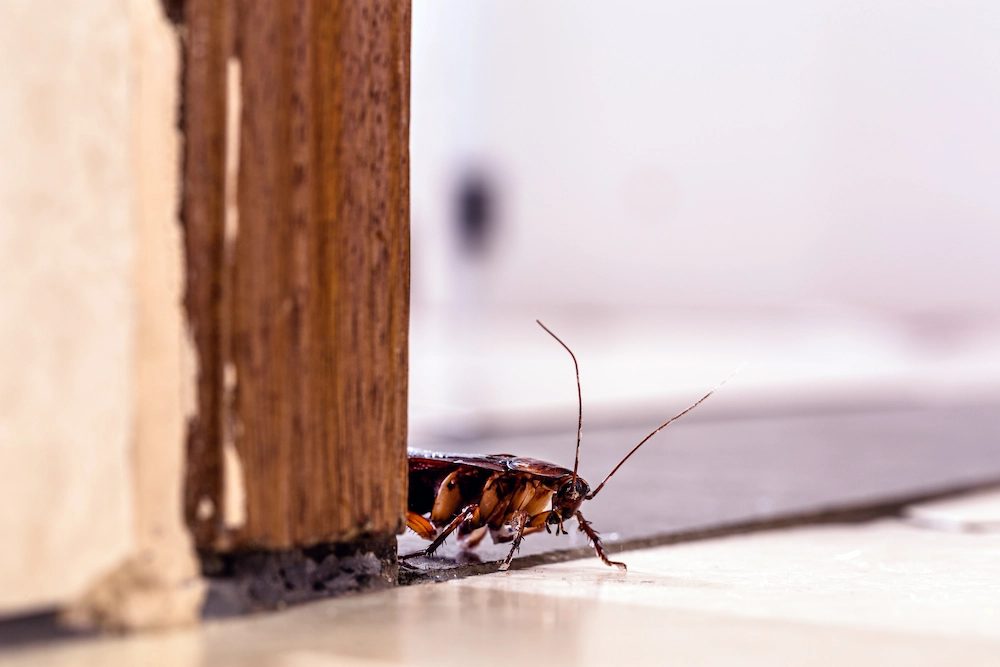You may have heard the term “pack rat” thrown around before. For example, if you had the habit of leaving books and toys strewn around your room as a kid, your parents might’ve said you were “living like a pack rat.” It turns out that pack rats are actually real! These rodents look like a cross between a rat and a chinchilla, but they cause problems like any other type of rodent pest. Let’s explore the world of the pack rat and see how they got their name, why they’re common pests, and how to prevent them from hoarding your space as their own.
Unpacking The Basics
Pack rats got their name for their strange habit of packing around various objects to use in their nests. They scavenge for different materials, items, and foods that will benefit their home. These rats also go by “wood rats” for their preference of using wood as nest material, and “trade rats” for their habit of trading the object they’re carrying for a new one they find.
They are nocturnal, but pack rats can be active during the day if they are in a safe environment. They’re year-round pests since they have a strong resistance to the cold. While they are great climbers, pack rats are also known to nest on the ground amidst natural debris. Their vegetarian diet leads them to forage for fruits and leaves around their habitat.
Pack rats have:
- A body length of 8 inches
- A tail length of up to 7.5 inches
- Large ears
- A furry tail
- Brown or gray coloring
- A light-colored belly
Location, Location, Location
The pack rat’s ideal habitat is sheltered, surrounded by nature, and away from humans. The space needs to be large enough for the original pack rats to reproduce and protect their young. The shelter they create out of natural materials is usually shaped like a beaver dam and is up to 4 feet long! The nest has a main area for the rats to rest, and a separate latrine area for their droppings. This keeps their sleeping area clean, but it contaminates the area right outside the nest.
Pack rats will nest in a huge variety of places, but their favorites include:
- Behind rocks
- In a shed
- In the attic
- In abandoned cars and machinery
- In cabins
- In outbuildings
- In the foothills
- Near mountains
In addition to crop pests, farmers also have to think about pack rats. The rodents can crawl inside farm equipment — tractors, harvesters, etc. — and chew the wiring, which renders the machine unusable until it’s repaired.
What Do They Pack, Anyway?
Speaking of their nests, what materials do pack rats need in order to build such a home? Some of the typical items we see pack rats hauling around are soda cans, keys, coins, balls, small toys, and bones. These objects can be used for structural integrity of the nest, but the majority of the nest is made of natural pieces. Pack rats construct their homes out of wood pieces, twigs, branches, and rocks. Their choice of building materials not only strengthens the nest, they also camouflage the pack rats hiding within.
Basically, any object that’s bright, shiny, and small is irresistible to a curious pack rat. It’s not really known why pack rats collect these treasures or why they trade the one they’re holding for a new one. It could just be an innocent fascination with shiny things, or even a thought-out plan to collect as many interesting items as possible. Maybe one day we’ll gain some insight into the unique mind of the pack rat, but that’s probably a long shot.
Full Of Dangers
Like any other rodent pest, pack rats are fulls of risks and dangers. They’re disease-ridden, destructive pests that only cause problems for anyone who is unfortunate enough to live near their habitat. Pack rats have a funny habit of collecting treasures, but it’s not enough to justify their invasion of our yards and homes.
The main risks that come with a pack rat invasion are:
- Disease: Pack rats carry multiple diseases that they spread through their droppings, urine, and bites, similar to other rodents. The diseases pack rats usually transmit are plague, Lyme disease, chagas disease, and tularemia.
- Destruction: Pack rats are inconsiderate (imagine that!) when they’re scavenging for nest materials and food. Their sharp nails and strong teeth will shred furniture, tree bark, and leaves. If a young fruit tree sustains enough damage, it won’t produce much fruit.
- Cohabitation: Pack rats are a surprisingly community-based pest. They don’t mind sharing their nest with fellow pests, which means you could have more than one pest invasion on your hands. Pack rats will share space with mice, insects, and spiders.
- Electrical Issues: Like we said before, pack rats will chew through any wires in their way as they invade cars, barbecues, tractors, and air conditioning units. At best, this is an inconvenience that requires repairs. But at worst, it’s a fire hazard that warrants concern.
Preventing Pack Rats
When it comes to preventing pack rats, it’s important to remember that they are sneaky and skilled, like any other pest. Therefore, the best way to prevent them from invading your space is to stay one step ahead of the fiends and block them out. Pack rat prevention is a year-round adventure since they tolerate the cold of the Pacific Northwest.
The most important task (in our humble opinion) is to seal any holes in your house’s exterior. Every crack, gap, and crevice needs to be filled as soon as possible because rodents can squeeze through holes that seem way too small for them. Stuff the holes with steel wool before sealing the edges with caulk. If the gaps are small, caulk should do the trick by itself.
Also, keeping your yard tidy is an easy way to keep pack rats out. They love clutter and leaf litter — there’s so many hiding spots to choose from! The basic yard chores work wonders in eliminating potential shelter areas for these pests. By clearing out overgrown brush and twigs, you remove their targets. Mowing the lawn, trimming back bushes and plants, and cutting back tree branches from the house are also great ways to prevent pack rats.
Finally, vigilance is essential. By this, we mean that keeping an eye out for any signs of pack rats is a good habit to have. It’s much easier to treat a small infestation than a huge one. Inspect your yard and home for any evidence of their presence, such as droppings, scattered nest material, and any live or dead pack rats. Pay special attention to any piles of natural materials — rocks, bricks, wood, etc. — since these spots are paradise for the pack rat.
Pointe Is Packed Full Of Pest Solutions
Whether you’re dealing with pack rats or another invasive species, Pointe Pest Control is here to help! Our team of licensed and experienced technicians solve pest problems with the utmost efficiency and care. We know firsthand the types of pests that roam the Pacific Northwest, so we are able to target your pest issues with the proper treatments every time. Between our thorough inspections and our efficient treatments, your pests don’t stand a chance against our reliable services. Contact us today for more information on our efficient treatments that will send those pests packing!
Citations
Living with woodrats (pack rats). (n.d.). Montana Fish, Wildlife & Parks. Retrieved July 23, 2024, from https://fwp.mt.gov/conservation/living-with-wildlife/woodrats
Pack rat. (n.d.). Terminix. Retrieved July 23, 2024, from https://www.terminix.com/rodents/rats/pack-rat/
Packrats! What are they good for? Absolutely everything. (2017, December 13). Desert Diaries. Retrieved July 23, 2024, from https://blog.desertmuseum.org/2017/12/13/packrats-what-are-they-good-for-absolutely-everything/

